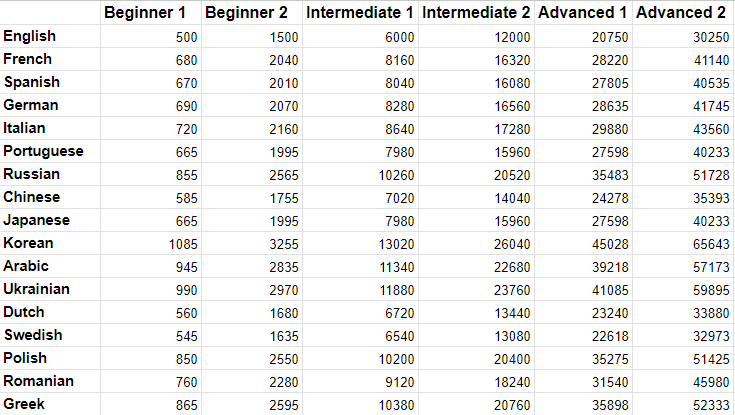While there is no perfect metric or test to gauge your fluency in a language, Known Words is a very useful approximation. In LingQ, your Known Words count determines your level in the language. When you reach the new target, you move to the next level in that language.
Why are the level targets lower or higher for some languages?
In some languages, a word with essentially the same meaning uses different endings.
For instance, in English, the verb “learn” in the present tense has only two variations: “learn” and “learns”. But “lernen,” the equivalent in German, has four: “lerne,” “lernst,” “lernt” and “lernen.”
Some languages have gendered nouns - for instance “amiga” and “amigo” in Spanish, both mean “friend.”
The LingQ system counts these all as separate words. This explains why different languages require more or less Known Words to reach a given level.
How accurate does your LingQ proficiency level match up to your ability to speak?
Known Words represent your potential in the language. And reaching the next level is a useful short-term goal to increase your potential.
Of course, to realize that potential, to actually become fluent, you will have to use the language and engage people in conversations [link to “How do I speak with a tutor? - Comprehensive Guide” help article].
The choice of when to start engaging in conversations [link to “How do I speak with a tutor? - Comprehensive Guide” help article] depends on your opportunities and personal preferences.
